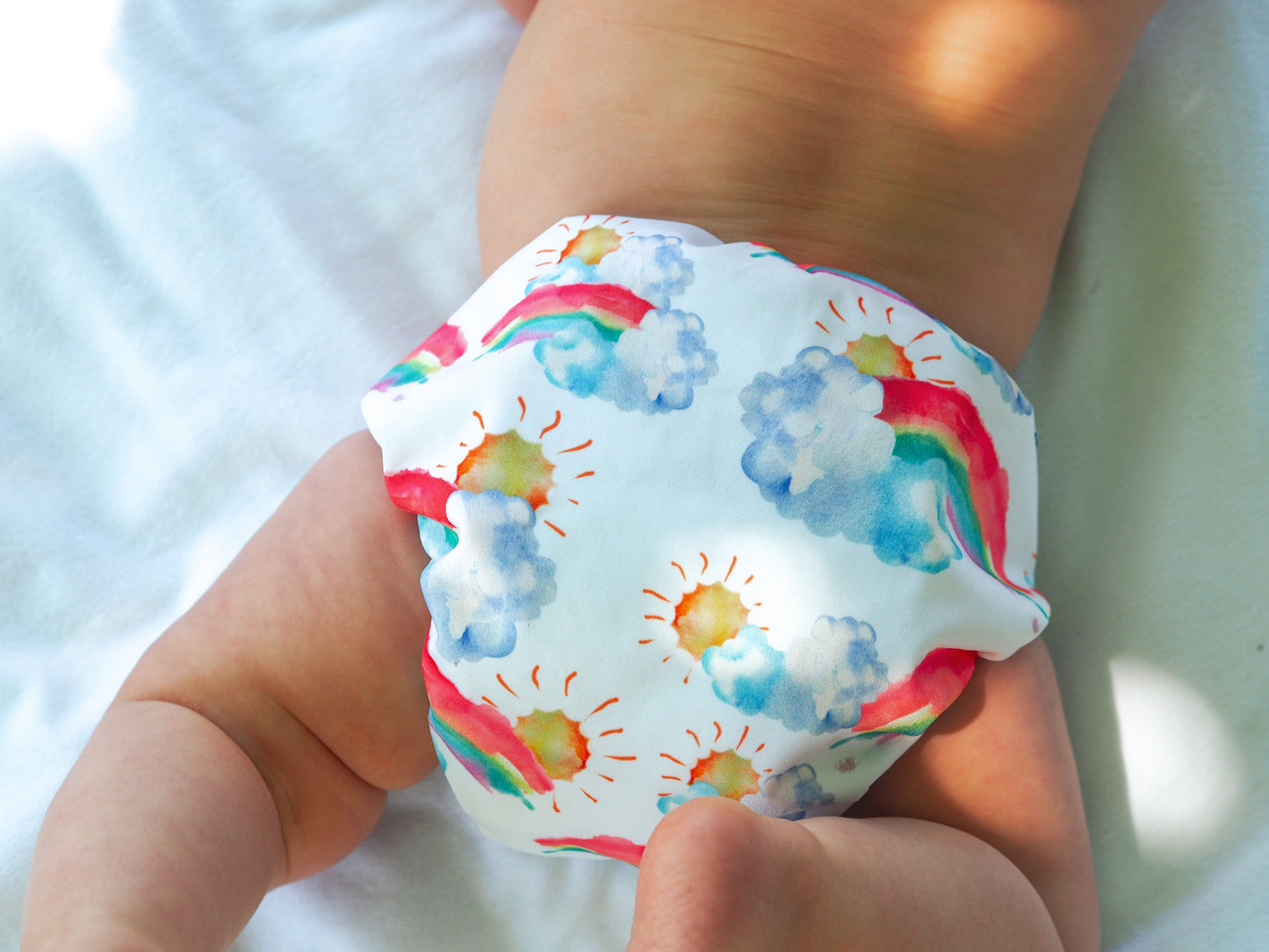Cloth nappies have come a long way from the days of folding squares and pinning them in place. Yet, despite their modern conveniences and eco-friendly reputation, several myths about cloth nappies still linger. If you’re considering switching to cloth but have some reservations, let’s tackle the most common myths and set the record straight.
Myth 1: Cloth Nappies Are Too Hard to Use
One of the biggest misconceptions is that cloth nappies are complicated. While older styles involved folding and pins, today’s cloth nappies are designed for convenience.
Modern options like all-in-ones, pocket nappies, and all-in-twos feature easy-to-use snaps or Velcro fastenings, making them as simple to put on as a disposable. Many parents even find cloth nappies more reliable for preventing leaks than disposables.
Myth 2: You’ll Spend All Your Time Washing Nappies
It’s true that cloth nappies require washing, but the process isn’t as daunting as it seems. Most parents find that washing every 2-3 days works well. With modern washing machines, all you need to do is:
- Remove any solids (often with a biodegradable liner or quick rinse).
- Toss the nappies in the machine.
- Use a recommended detergent and let the machine do the work.
Drying can be done on a line or in a dryer, depending on your preferences and the materials of your nappies. In short, washing cloth nappies is far from the time-consuming chore many imagine.
Myth 3: Cloth Nappies Are Expensive
While the upfront cost of cloth nappies can seem high, they’re a money-saving choice in the long run. A full set of reusable nappies might cost a few hundred dollars, but they can last through multiple children, significantly reducing your costs compared to buying disposables every week.
Additionally, many families build their stash gradually or purchase second-hand nappies to save even more. Over time, the financial savings are undeniable—plus, you’ll be helping the environment!
Myth 4: Cloth Nappies Leak More Than Disposables
Many people assume that cloth nappies are less effective at containing leaks, but the opposite is often true. Modern cloth nappies are designed with multiple layers of absorbent material and snug leg gussets to prevent leaks.
By choosing the right type of nappy (e.g., pockets or fitted nappies) and ensuring a proper fit, you can avoid leaks just as effectively—if not more—than with disposables.
Myth 5: Cloth Nappies Are Unsanitary
Some people worry that cloth nappies are unhygienic, but when washed properly, they’re just as clean and safe as disposables. Using hot water and a good detergent ensures nappies are thoroughly sanitised.
If anything, cloth nappies are often gentler on your baby’s skin since they don’t contain the chemicals found in many disposables. Many parents report fewer rashes and skin irritations after switching to cloth.
Myth 6: Cloth Nappies Don’t Work for Busy Parents
Modern cloth nappies are designed to fit seamlessly into busy lifestyles. They’re quick to put on, easy to clean, and can be packed in a changing bag just like disposables. Wet bags make storing used nappies simple when you’re out and about, so there’s no need to sacrifice convenience.
Many working parents find that cloth nappies fit into their routines without extra hassle, and some even use a hybrid system of cloth at home and disposables for daycare or travel.
Myth 7: Cloth Nappies Don’t Fit Well
Parents often worry about fit, especially with a growing baby. However, modern cloth nappies come in adjustable sizes with snaps or Velcro to ensure a snug and comfortable fit. Baby Bare offers one-size nappies that grow with your baby, saving you the trouble of buying multiple sizes.
If you’re worried about bulkiness, slimmer designs are available that provide excellent absorbency without adding extra padding.
Myth 8: Cloth Nappies Aren’t as Eco-Friendly as They Seem
Some skeptics argue that washing cloth nappies uses water and energy, diminishing their environmental benefits. While it’s true that cloth nappies require washing, their overall environmental impact is still much lower than that of disposables, which take hundreds of years to decompose in landfills.
By washing nappies efficiently—using full loads, air-drying when possible, and choosing energy-efficient appliances—you can minimise the environmental footprint of cloth nappies.
Myth 9: Cloth Nappies Are Outdated
Gone are the days of plain white cloths and safety pins. Today’s cloth nappies are stylish, colourful, and designed for modern parents. Baby Bare offers a range of stunning artist designed prints and high-quality fabrics that make cloth nappies practical and fashionable (learn more about our artists here).
Modern cloth nappies combine cutting-edge design with eco-conscious values, proving they’re anything but outdated.
Myth 10: Cloth Nappies Are All or Nothing
Some parents feel intimidated by the idea of committing to cloth nappies full-time. The truth is, you don’t have to go all-in right away. Many families start by using cloth nappies at home or during the day and opt for disposables at night or while traveling.
There’s no one-size-fits-all approach to cloth nappies, and even part-time use can make a big difference for your wallet and the environment.
Final Thoughts
Cloth nappies are an incredibly versatile, eco-friendly, and cost-effective option for modern families. While myths about their inconvenience or inefficiency still exist, the truth is that cloth nappies are easier and more practical than ever.
Don’t let outdated misconceptions hold you back—try cloth nappies for yourself and discover why so many parents love them. Have questions or concerns about making the switch? Share them in the comments below, and let’s keep the conversation going!

